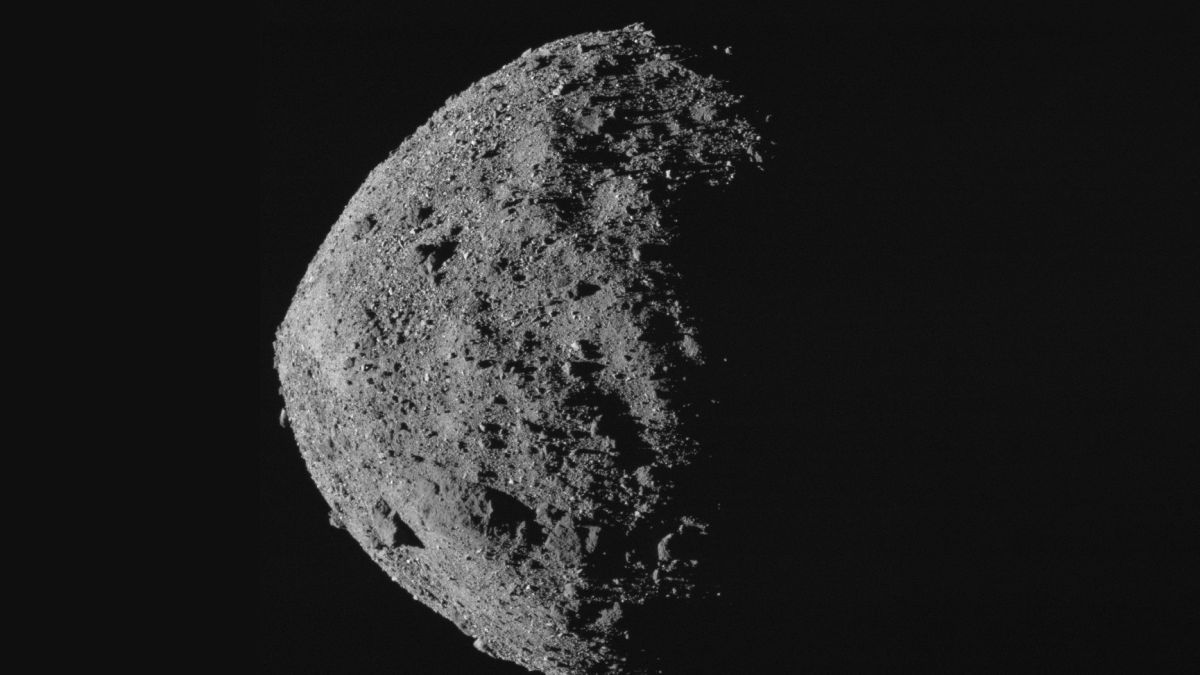A satellite image of a recent explosive volcanic deposit around a fissure of the Cerberus Fossae system on Mars. (Image credit: NASA/JPL/MSSS/The Murray Lab) Evidence of what may be the youngest eruption seen yet on Mars suggests the Red Planet may still be volcanically active, raising the possibility it was recently habitable, a new study finds. Most volcanism on Mars occurred between 3 billion and 4 billion years ago, leaving behind giant monuments such as Olympus Mons, the tallest mountain in the solar system. At 16 miles (25 km) high,…
Read MoreMonth: May 2021
NASA’s OSIRIS-REX Leaves Asteroid Bennu, Heads for Home
NASA’s asteroid explorer has begun its long journey home with precious cargo onboard: samples of the asteroid Bennu. The post NASA's OSIRIS-REX Leaves Asteroid Bennu, Heads for Home appeared first on Sky & Telescope.
Read MoreOSIRIS-REx Bids Farewell to Asteroid Bennu
OSIRIS-REx bids farewell to Asteroid Bennu and begins its long journey home.
Read MoreWant to bid on Blue Origin’s space tourist seat auction? Be sure to read the fine print
Jeff Bezos’ Blue Origin plans to auction off a seat for its debut crewed spaceflight on July 20, but you should read the conditions carefully before applying. The company aims to launch its six-seat New Shepard suborbital vehicle on the 52nd anniversary of the historic Apollo 11 moon landing. New Shepard has already flown 15 times to date, but the July launch will be the first mission to carry people — and one of those passengers will be the auction winner. Blue Origin made the auction announcement May 5 on…
Read MoreFarewell, Bennu! NASA spacecraft leaves asteroid to bring pieces of space rock to Earth
NASA’s first asteroid-sampling mission is hauling its space-rock bounty home. The OSIRIS-REx probe began heading for Earth today (May 10), kicking off a 1.4-billion-mile (2.3 billion kilometers) journey that will culminate with the touchdown of its sample capsule in the Utah desert in September 2023. That capsule is full of pristine material that OSIRIS-REx collected from the near-Earth asteroid Bennu in October 2020. The spacecraft had been lingering near Bennu’s patch of space until around 4 p.m. EDT (2000 GMT) today, when it fired its main thrusters for seven minutes. …
Read MoreNASA rocket launch may spark visible light show over US East Coast and Bermuda tonight
The map on the left shows where observers may be able to see the launch of NASA’s Black Brant XII sounding rocket from Wallops Island, weather permitting, on May 9, 2021. On the right is a photo of a four-stage Black Brant XII sounding rocket. (Image credit: NASA) A small NASA sounding rocket will launch tonight (May 10), creating a brief, colorful light show over the U.S. East Coast and Bermuda, and you can watch all the action live. NASA is scheduled to launch a four-stage Black Brant XII rocket…
Read MoreNASA’s OSIRIS-REx Spacecraft Heads for Earth with Asteroid Sample
After nearly five years in space, NASA’s Origins, Spectral Interpretation, Resource Identification, Security, Regolith Explorer (OSIRIS-REx) spacecraft is on its way back to Earth with an abundance of rocks and dust from the near-Earth asteroid Bennu.
Read MoreNASA Announces New Associate Administrator
NASA Administrator Sen. Bill Nelson announced Monday Robert D. Cabana, who has served as director of NASA’s Kennedy Space Center since 2008, will serve as associate administrator effective Monday, May 17.
Read MoreJurczyk Retires as NASA Associate Administrator
Steve Jurczyk, who served as acting NASA administrator from Jan. 20 to May 3, 2021, announced Monday he will retire on Friday, May 14, after more than three decades of service at NASA.
Read MoreWater-Ice Clouds Could Have Warmed Early Mars
New simulations show that the greenhouse effect of high water-ice clouds could have warmed early Mars, permitting the presence of long-ago lakes. The post Water-Ice Clouds Could Have Warmed Early Mars appeared first on Sky & Telescope.
Read More
